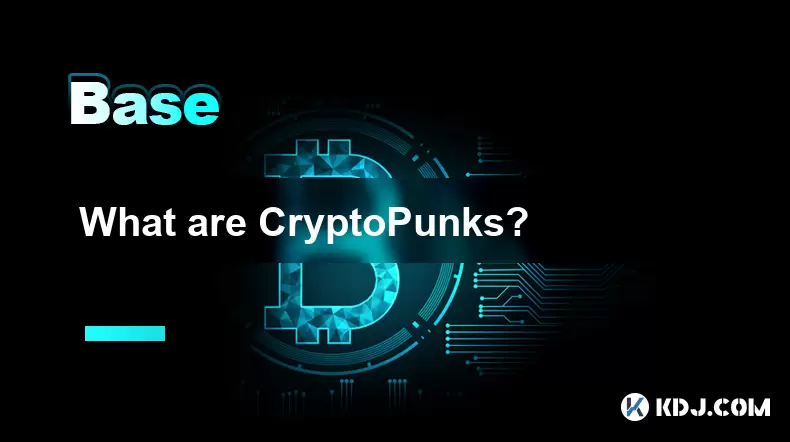-
 Bitcoin
Bitcoin $118300
-1.72% -
 Ethereum
Ethereum $3591
-0.69% -
 XRP
XRP $3.478
-3.53% -
 Tether USDt
Tether USDt $1.001
-0.01% -
 BNB
BNB $737.7
-0.54% -
 Solana
Solana $177.3
-2.40% -
 USDC
USDC $0.9999
-0.01% -
 Dogecoin
Dogecoin $0.2538
7.04% -
 TRON
TRON $0.3256
-0.85% -
 Cardano
Cardano $0.8332
-3.48% -
 Hyperliquid
Hyperliquid $44.80
-3.30% -
 Stellar
Stellar $0.4672
-6.09% -
 Sui
Sui $3.828
-5.98% -
 Chainlink
Chainlink $18.15
-3.41% -
 Hedera
Hedera $0.2655
-7.16% -
 Bitcoin Cash
Bitcoin Cash $517.5
-0.64% -
 Avalanche
Avalanche $23.89
-2.37% -
 Shiba Inu
Shiba Inu $0.00001519
-0.45% -
 UNUS SED LEO
UNUS SED LEO $8.973
0.13% -
 Toncoin
Toncoin $3.211
-2.54% -
 Litecoin
Litecoin $103.5
-3.58% -
 Polkadot
Polkadot $4.313
-3.90% -
 Uniswap
Uniswap $10.31
0.67% -
 Monero
Monero $325.4
-2.88% -
 Bitget Token
Bitget Token $5.049
3.51% -
 Ethena USDe
Ethena USDe $1.002
0.04% -
 Pepe
Pepe $0.00001346
-2.96% -
 Dai
Dai $0.9999
-0.02% -
 Aave
Aave $322.1
-2.93% -
 Bittensor
Bittensor $411.9
-4.70%
What is a honeypot crypto scam
Honeypot crypto scams lure investors with fake tokens that trap funds by blocking sales, often leading to irreversible losses.
Jul 11, 2025 at 12:00 am

Understanding the Basics of a Honeypot Crypto Scam
A honeypot crypto scam refers to a malicious strategy used by attackers to trap unsuspecting cryptocurrency investors. In this type of scam, developers create a seemingly legitimate token or decentralized application (dApp) that appears promising in terms of returns or utility. However, hidden within the smart contract code are traps or restrictions that prevent users from selling their tokens or withdrawing funds.
The term "honeypot" is borrowed from cybersecurity, where it denotes a system designed to attract and detect unauthorized access attempts. In the context of cryptocurrency, a honeypot operates differently but follows the same principle: it lures victims into interacting with a token or platform under false pretenses, only to exploit them afterward.
Smart contracts are the backbone of most DeFi projects, and when they contain honeypot mechanisms, they can lock buyers' funds indefinitely.
How Do Honeypot Scams Work?
Honeypot scams typically rely on manipulated smart contracts that allow buying but restrict selling. Scammers deploy these contracts on decentralized exchanges like Uniswap or PancakeSwap, where anyone can interact with them without centralized oversight.
Here's how the process usually unfolds:
- Attackers launch a new token with attractive promises such as high yield farming rewards or unique features.
- The token is listed on a decentralized exchange, and liquidity is added to encourage trading.
- Users buy the token, often using popular coins like ETH or BNB.
- When users attempt to sell their holdings, they discover that the transaction reverts or fails due to hidden constraints in the contract, such as time locks or artificial price manipulation.
Victims are left holding tokens that cannot be sold, effectively losing their investment while the scammers drain the liquidity pool or manipulate prices to benefit themselves.
Identifying a Honeypot Before Investing
Recognizing a honeypot before investing is crucial for protecting your digital assets. Here are some red flags to watch out for:
- Unusually high reward rates promised by yield farms or staking pools.
- Lack of audit reports or transparent development history.
- Anonymous team members or vague project roadmaps.
- Low or suspiciously concentrated liquidity pools.
- No ability to test sell small amounts before committing large sums.
One effective method is to check the smart contract on platforms like BscScan or Etherscan for any unusual functions. Tools such as HoneyBot or RugDoc offer honeypot detection services that analyze whether a token allows selling or contains suspicious parameters.
Always perform due diligence by reviewing the contract code or consulting community forums before making an investment.
Step-by-Step Guide to Check for a Honeypot
If you're considering investing in a new token, follow these steps to check if it might be a honeypot:
- Visit the official website or social media channel of the token.
- Locate the contract address for the token on the blockchain explorer corresponding to its network (e.g., BscScan for Binance Smart Chain).
- Use a honeypot checker tool like HoneyBot or BSC-HoneyChecker.
- Enter the token address and run the analysis.
- Look for warnings such as “sell disabled,” “transfer tax too high,” or “no sell function.”
Alternatively, you can manually inspect the contract code for functions like transfer, transferFrom, or swapAndLiquify to determine if selling functionality has been removed or restricted.
Even if a token passes initial checks, always start with a minimal investment to verify sell functionality works before increasing exposure.
Real-Life Examples of Honeypot Scams
Several notable honeypot scams have emerged in recent years, causing significant losses for investors:
- Saddry Token: Marketed as a humorous tribute to sad emojis, this token allowed buying but blocked all sell transactions. Investors discovered they could not exit, and the creators disappeared with liquidity.
- Shiba Inu Clone Tokens: Numerous fake versions of well-known tokens like Shiba Inu have been deployed as honeypots, mimicking branding to lure in careless investors.
- Fake Airdrops: Some honeypot tokens are distributed through fake airdrops, where recipients are encouraged to claim free tokens that lead them to interact with a malicious contract.
These examples highlight the importance of verifying every aspect of a token before engaging with it.
Community vigilance and open-source audits play a critical role in exposing and preventing honeypot scams.
Frequently Asked Questions
Can a honeypot scam occur on Ethereum?
Yes, honeypot scams are not limited to any specific blockchain. They can occur on Ethereum, Binance Smart Chain, Polygon, and other networks that support smart contracts and decentralized exchanges.
Is there a way to recover funds from a honeypot?
Recovering funds from a honeypot is extremely difficult, as the smart contract is designed to prevent users from selling or transferring tokens. In rare cases, if the developer is reachable and cooperative, they may provide a fix or refund, but this is not guaranteed.
Are honeypot scams illegal?
While many jurisdictions lack clear legal frameworks for DeFi-related crimes, honeypot scams generally fall under fraud or deceptive practices. Legal actions are challenging due to the pseudonymous nature of blockchain transactions and the global reach of such scams.
Why do people still fall for honeypot scams?
Many investors are drawn in by the promise of quick profits or fear missing out (FOMO). Additionally, the complexity of blockchain technology and smart contracts makes it hard for non-technical individuals to identify risks without proper tools or knowledge.
Disclaimer:info@kdj.com
The information provided is not trading advice. kdj.com does not assume any responsibility for any investments made based on the information provided in this article. Cryptocurrencies are highly volatile and it is highly recommended that you invest with caution after thorough research!
If you believe that the content used on this website infringes your copyright, please contact us immediately (info@kdj.com) and we will delete it promptly.
- Bitcoin, Nexchain, and Presales: What's Hot in the Crypto Space?
- 2025-07-19 16:30:12
- Presales, ICOs, and 100x Returns: Navigating the Crypto Landscape in 2025
- 2025-07-19 16:30:12
- Crypto Picks: Navigating the Meme Coin Mania – Toshi, Ski Mask Dog, and the Elusive Pepe Coin 30,000% Rally
- 2025-07-19 14:30:13
- SUI Blockchain, Unilabs, and Curve Finance: A New Era of Crypto Investments?
- 2025-07-19 15:10:12
- Riding the Altcoin Wave: ADA Price, XRP Surges, and the Season of Opportunity
- 2025-07-19 15:30:12
- MoonBull, Meme Coins, and Your Watchlist: What's Hot Right Now
- 2025-07-19 14:30:13
Related knowledge

What is the Inter-Blockchain Communication Protocol (IBC)?
Jul 19,2025 at 10:43am
Understanding the Inter-Blockchain Communication Protocol (IBC)The Inter-Blockchain Communication Protocol (IBC) is a cross-chain communication protoc...

What to look for in a crypto project's whitepaper?
Jul 19,2025 at 01:42pm
Understanding the Purpose of a WhitepaperA whitepaper is a foundational document for any cryptocurrency project, often serving as the first point of c...

What are CryptoPunks?
Jul 19,2025 at 08:28am
Understanding the Basics of Bitcoin MiningBitcoin mining is the process through which new Bitcoin is introduced into circulation and transactions are ...

What is airdrop farming?
Jul 19,2025 at 03:56am
What Is Airdrop Farming?Airdrop farming is a term that refers to the process of accumulating tokens or coins through participating in airdrops and yie...

Are my funds insured on a crypto exchange?
Jul 19,2025 at 08:21am
Understanding the Concept of Fund Insurance on Crypto ExchangesWhen users store their digital assets on a cryptocurrency exchange, they often wonder w...

Can cryptocurrency be hacked?
Jul 19,2025 at 12:43pm
Understanding the Vulnerabilities in Cryptocurrency SystemsCryptocurrency, by design, is built on blockchain technology, which is inherently secure du...

What is the Inter-Blockchain Communication Protocol (IBC)?
Jul 19,2025 at 10:43am
Understanding the Inter-Blockchain Communication Protocol (IBC)The Inter-Blockchain Communication Protocol (IBC) is a cross-chain communication protoc...

What to look for in a crypto project's whitepaper?
Jul 19,2025 at 01:42pm
Understanding the Purpose of a WhitepaperA whitepaper is a foundational document for any cryptocurrency project, often serving as the first point of c...

What are CryptoPunks?
Jul 19,2025 at 08:28am
Understanding the Basics of Bitcoin MiningBitcoin mining is the process through which new Bitcoin is introduced into circulation and transactions are ...

What is airdrop farming?
Jul 19,2025 at 03:56am
What Is Airdrop Farming?Airdrop farming is a term that refers to the process of accumulating tokens or coins through participating in airdrops and yie...

Are my funds insured on a crypto exchange?
Jul 19,2025 at 08:21am
Understanding the Concept of Fund Insurance on Crypto ExchangesWhen users store their digital assets on a cryptocurrency exchange, they often wonder w...

Can cryptocurrency be hacked?
Jul 19,2025 at 12:43pm
Understanding the Vulnerabilities in Cryptocurrency SystemsCryptocurrency, by design, is built on blockchain technology, which is inherently secure du...
See all articles

























































































